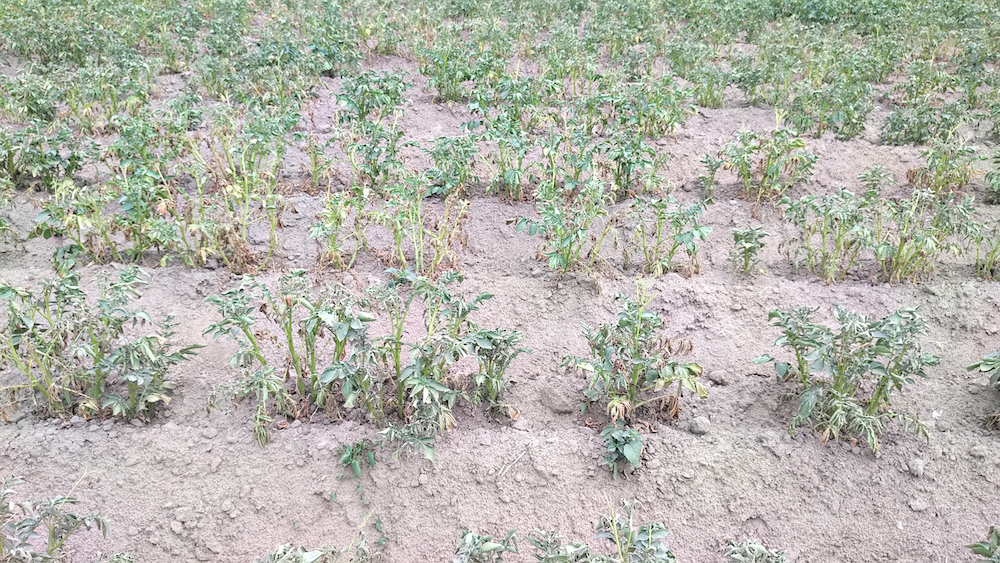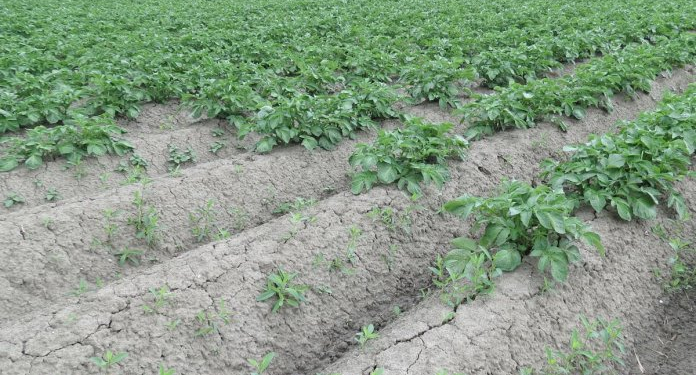Sure, it has something to do with water. And is measured in percent. But how are pores, soil type and humus related to this? What form the basis of the usable soil capacity?

On the one hand, dry cracks that easily swallow a smartphone, on the other hand, fields that have been flooded for weeks – the capricious weather conditions of recent years demand a lot from our soils.
It is hard to believe that intact soils can buffer both extremes. Intact means above all an optimal pore structure, because this ensures water absorption and storage and delivery to the roots.
Not all water is available to plants
The decisive factor is how the plant gets to the soil water. The measure for the plant availability is the usable field capacity (nFK). It describes the proportion of adhesive water that the roots can tear from the soil with their suction forces.
If all the water available to the plants has been used up, the plants dry up; the permanent wilting point has been reached.
The less the water requirement can be covered by rain during the growing season, the more the NFK decides on the yield.
Which pores can hold the water?
The fact that water is bound to different degrees depends on the volume of the pores in the soil. The largest, coarse pores with diameters of 0.01 to 0.05 mm, have two tasks: They ensure the exchange of air and the rapid seepage of rainwater. They can hardly hold it.
In contrast, central pores between 0.002 and 0.01 mm store the water and can also release it again. They form the basis of the usable field capacity. In even smaller pores under 0.002 mm, the water is stuck and not available to plants. It is then called dead water.
Loess soils have the ideal mix of pores
Loess soils, with their high proportion of medium pores, have the largest nFK. Clay soils store most of the water, but mainly bind it in fine pores as dead water. The nFK is in the middle range. Sandy soils with predominantly coarse pores have the lowest NOK and the smallest dead water content.
If the amount of water exceeds the NFK, the excess seeps into the coarse pores and benefits the formation of new groundwater. The seepage water moves so slowly in the fine pores that the growing fine roots can catch up with it.
Capillaries pump upwards
The drier the soil, the slower the water moves. This is where the capillary forces come into play: Against gravity, the finest channels transport water from more humid layers of soil to the roots. The speed and amount depend on the soil conditions. In uncompacted silt soils, 5 l / m² per day can be brought up over 85 cm; in coarse sand or clay it is 20 to 30 cm.
More humus – higher nFK
In addition to the pore structure and the type of soil, the humus and its content in the soil determine the usable field capacity. Anything that improves humus build-up and root penetration increases the NFK. This also serves to protect the groundwater, because substances that are harmful to the environment or health remain in the soil for longer, are bound or are broken down by microorganisms.
Tests also show that the usable field capacity increases relatively quickly after a higher supply of lime, in addition to the air capacity. This is especially true for clayey soils and for the topsoil. At the same time, the proportion of dead water, i.e. water that is not available to plants, decreases. The addition of lime and flocculation results in coarser soil structures with more central and narrow coarse pores. This effect cannot be clearly observed on soils with lower clay contents.









